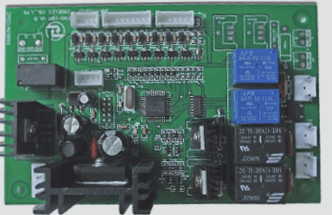1. To be able to search and find solutions to problems encountered in PCB manufacturing, it is essential to understand the role of the PCB copper clad laminate material. Quality issues that arise during the manufacturing process are often linked to the PCB substrate material. Even with a well-written PCB laminate specification, it may not cover all necessary tests to identify potential laminate-related production problems. Below are some common PCB laminate issues and ways to identify them.
Once a PCB laminate problem is identified, it should be included in the PCB laminate specification to prevent ongoing quality fluctuations and product obsolescence. Material issues arising from variations in PCB laminate quality may occur when manufacturers use different batches of raw materials or pressing loads. Users may not have sufficient records to differentiate between specific pressing loads or material batches. This can lead to continuous production of PCBs with warping issues, resulting in wasted labor and expensive components.
If batch numbers can be checked immediately, the PCB laminate manufacturer can verify the resin and copper foil batch numbers, curing cycles, and more. Failure to align with the PCB laminate manufacturer’s quality control system can lead to long-term losses for the user. The following section outlines common substrate material issues in the PCB manufacturing process.
2. Surface Problems:
Signs of surface problems include poor adhesion of printing material, coating, unetched areas, and unsolderable parts. Visual inspection, such as observing visible water marks, is typically used to identify these issues. Possible causes include overly smooth surfaces due to release film, uncoppered laminate side with residual release agent, pinholes in copper foil causing resin accumulation, excess antioxidants on copper foil, and fingerprints or grease stains from improper handling during operations.
To address these issues, laminate manufacturers should consider using different release materials, inspecting copper foil batches, and implementing proper cleaning methods. Personnel should be educated on proper handling practices, such as wearing gloves and keeping laminates clean. It is crucial to follow recommended cleaning procedures and test items provided by laminate manufacturers before making any changes to the manufacturing process.
Once a PCB laminate problem is identified, it should be included in the PCB laminate specification to prevent ongoing quality fluctuations and product obsolescence. Material issues arising from variations in PCB laminate quality may occur when manufacturers use different batches of raw materials or pressing loads. Users may not have sufficient records to differentiate between specific pressing loads or material batches. This can lead to continuous production of PCBs with warping issues, resulting in wasted labor and expensive components.
If batch numbers can be checked immediately, the PCB laminate manufacturer can verify the resin and copper foil batch numbers, curing cycles, and more. Failure to align with the PCB laminate manufacturer’s quality control system can lead to long-term losses for the user. The following section outlines common substrate material issues in the PCB manufacturing process.
2. Surface Problems:
Signs of surface problems include poor adhesion of printing material, coating, unetched areas, and unsolderable parts. Visual inspection, such as observing visible water marks, is typically used to identify these issues. Possible causes include overly smooth surfaces due to release film, uncoppered laminate side with residual release agent, pinholes in copper foil causing resin accumulation, excess antioxidants on copper foil, and fingerprints or grease stains from improper handling during operations.
To address these issues, laminate manufacturers should consider using different release materials, inspecting copper foil batches, and implementing proper cleaning methods. Personnel should be educated on proper handling practices, such as wearing gloves and keeping laminates clean. It is crucial to follow recommended cleaning procedures and test items provided by laminate manufacturers before making any changes to the manufacturing process.



